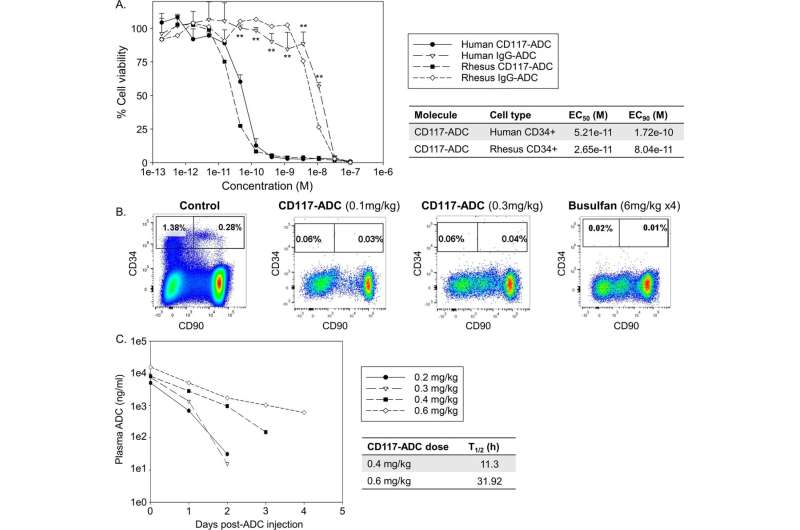This article has been reviewed according to Science X's editorial process and policies. Editors have highlighted the following attributes while ensuring the content's credibility:
fact-checked
peer-reviewed publication
trusted source
proofread
Researchers work to preserve fertility for people undergoing gene therapy

Researchers at the National Institutes of Health have created a novel gene therapy procedure that could preserve fertility in people with sickle cell disease and other genetic blood conditions. Infertility is a high-risk and long-term side effect associated with current bone marrow transplantation and gene therapy approaches to treat sickle cell disease. It is a common reason people of reproductive age give for not pursuing these therapies.
The study, which appears in Nature Communications, describes the successful testing in animals of an antibody-drug conjugate, or conditioning agent, that exclusively targets blood-forming stem cells in the bone marrow. Conditioning agents are used in gene therapy to remove diseased stem cells and allow healthy stem cells to form.
This new agent, called CD117-ADC, does not appear to damage other organs during the conditioning process. It is less toxic than the conventional agent now used for gene therapy in humans, called busulfan, which may cause ovarian failure in women and may stop sperm production in men, resulting in infertility.
Researchers found that CD117-ADC allowed robust engraftment of gene-modified cells to increase fetal hemoglobin, a type of oxygen-carrying blood protein present at birth. When used in adults with sickle cell disease, fetal hemoglobin can reduce complications associated with the disease, and reactivating and increasing its production is a promising goal for gene therapy. Unlike busulfan, the new conditioning agent also was shown to preserve fertility in females and males.
More information: Naoya Uchida et al, Fertility-preserving myeloablative conditioning using single-dose CD117 antibody-drug conjugate in a rhesus gene therapy model, Nature Communications (2023). DOI: 10.1038/s41467-023-41153-5




















